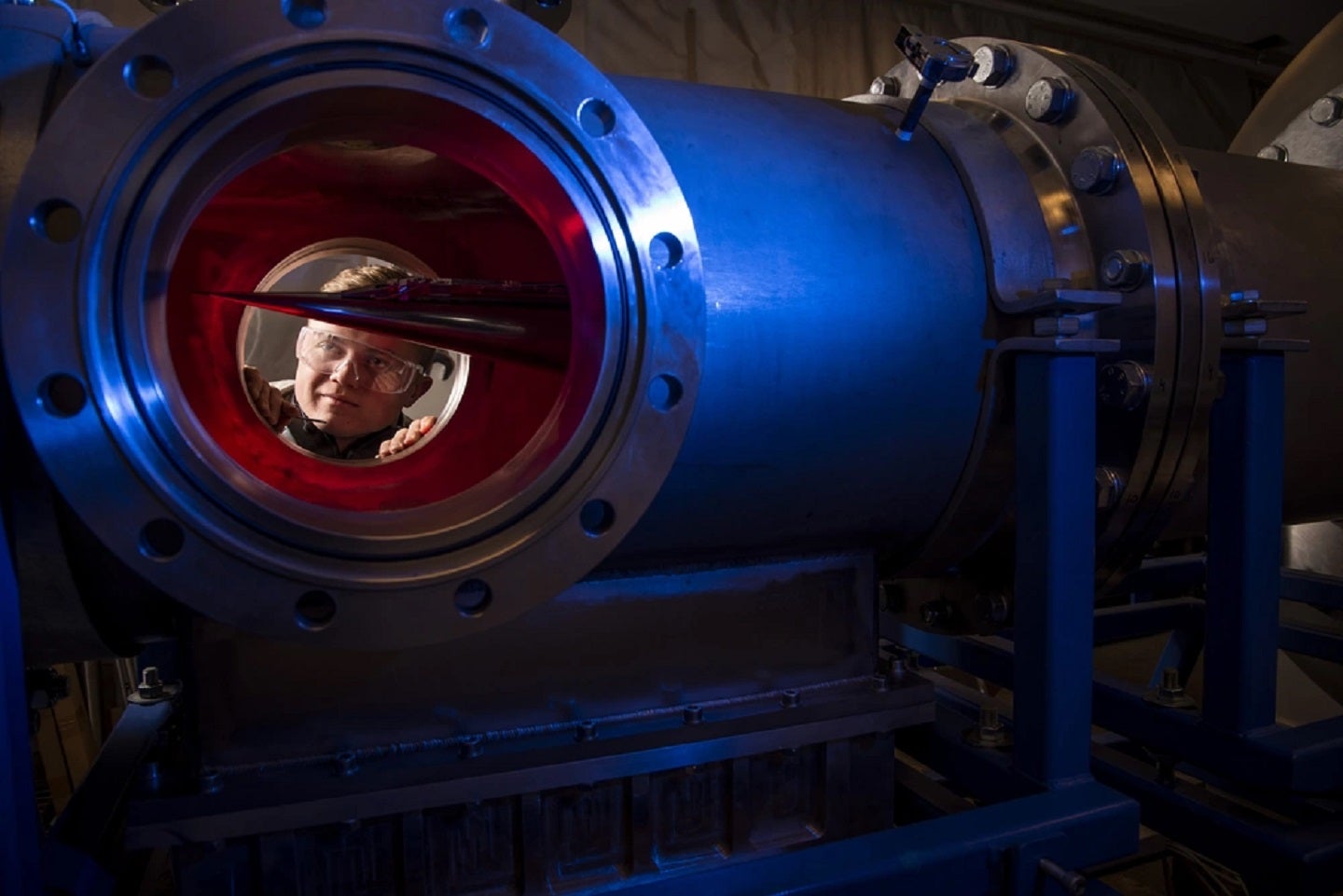
The US Department of Defense (DoD) has announced that it has awarded three contracts that strengthen the supply chains for hypersonic systems, a key capability concern for the US government, as it seeks to maintain its competitive military advantage over China and Russia.
This announcement follows President Biden’s recognition of the need to support and advance the development of the domestic hypersonics industrial base. This was outlined in the FY2024 budget, published 13 March 2023, which invests “in resiliency in key parts of the defence supply chain to ensure stability in the industrial base’s ability to produce what the Joint Force needs.”
The budget allocates $11bn toward a mix of lethal precision weapons such as hypersonic technologies among others.
The companies receiving the awards include General Electric (GE), Carbon-Carbon Advanced technologies (C-CAT) and Northrop Grumman.
GE was awarded a $7.9m contract to engage in a 39-month effort to increase capacity for the production of high and ultra-high temperature composites (U/HTC). It also modernises capital equipment to support the scale-up of aeroshell production.
Similarly, C-CAT was awarded a $7.5m contract to undertake a 38-month effort to build new production capabilities, expand existing manufacturing spaces, and acquire capital equipment for the mnaufacture of large complex assemblies made of carbon-carbon (C-C), a class of advanced composite material that is critical for various defence and aerospace applications. This effort will support increased production of rates for C-C nose tips and aeroshell assemblies.
Finally, Northrop Grumman was awarded a $9.4m contract to expand the domestic supply capability for producing U/HTC to support multiple components of hypersonic and strategic systems through the procurement of automated preform manufacturing equipment and high temperature furnaces.
The Assistant Secreatry of Defense for Industrial Base Policy, Dr Laura Taylor-Kale, stated: “The DoD continues to deliver on the President’s strategic objectives of supporting industrial sectors critical to our nation’s national security needs and strategic interests.”
U/HTC resistance and Scaling up
The GE and Northrop Grumman contracts tell us that the DoD are making efforts to confront the enduring problem research and development faces with ensuring materials manage the extreme heat that hypersonic missiles are exposed to when travelling at high speeds in the atmosphere.
The Congressional Budget Office explain that “Shielding hypersonic missiles’ sensitive electronics, understanding how various materials perform, and predicting aerodynamics at sustained temperatures as high as 3,000 degress farenheit requires extensive flight testing.” Tests are ongoing but failures in recent years have delayed progress.
GE will be tasked with increasing the production of U/HTC materials that will withstand the extreme heat above mach 5, that is to say five times the speed of sound. Meanwhile Northrop Grumman are tasked with delivering the appropriate industrial facilities needed to manufacture these tough components.
Another consideration that these three contracts consider is the increased production of hypersonic technology components. Having a greater output of components will give the US a military advantage as they will be seen to be able to readily deploy hypersonic missiles.
The arms race is only one facet
The problem with this is that hypersonic technologies remain at an early stage. As it stands, these weapons are not able to be fielded. Although, that hardly dissuades the US from investing in ongoing hypersonic development programmes, several of which are expected to reach certain milestones this year as we see in the table below.

These three contracts also tell us that the DoD defines the nature of its competition with China, and Russia to a lesser extent, through its military capability. The DoD’s focus on its military build-up is quite a narrow conception of the geopolitical competition.
It is important that the US examines all areas when it looks at how to compete with China. Among the common themes such as its arms race, tech war, export controls, and military-industrial investment, the US must also respond to how China operates. One crucial method of competition is how the US co-operates with its allies and partners, and a central issue within this method of competition is America’s equipment delivery pace.







